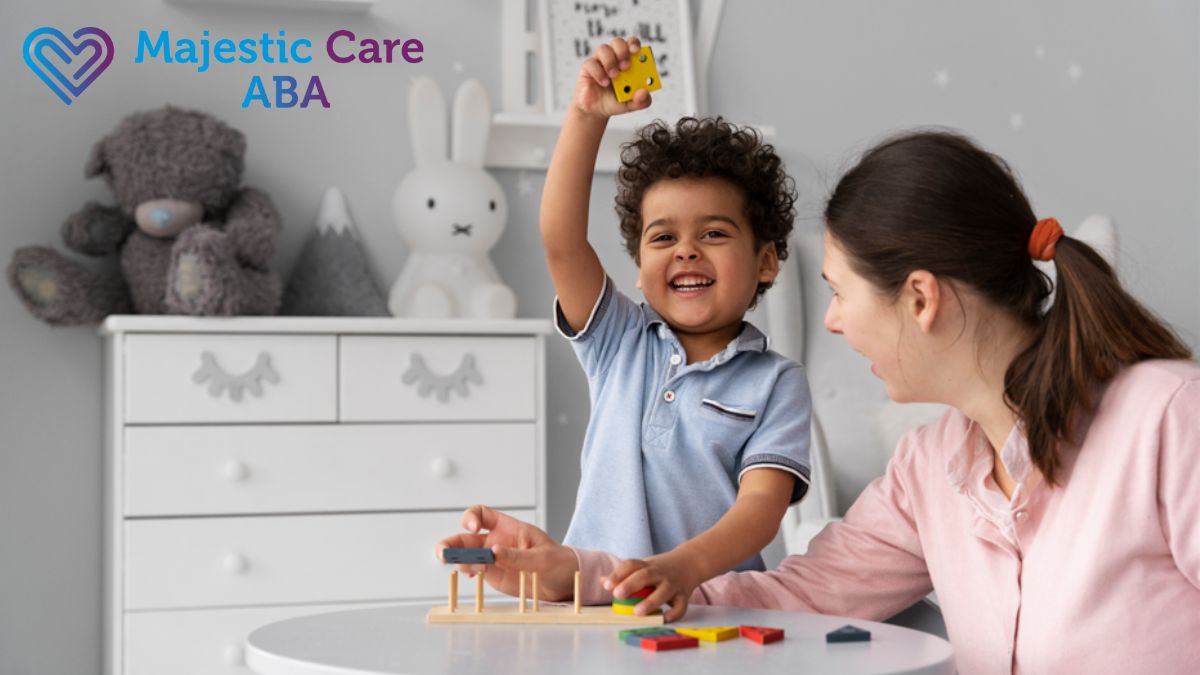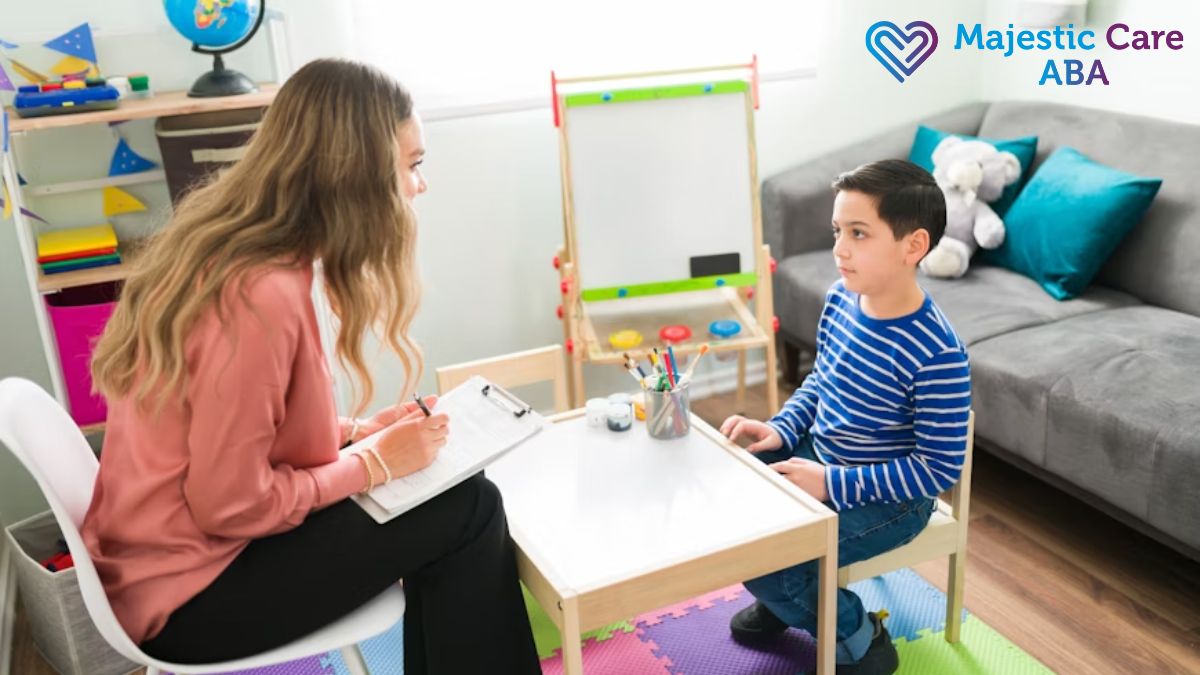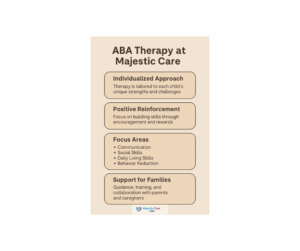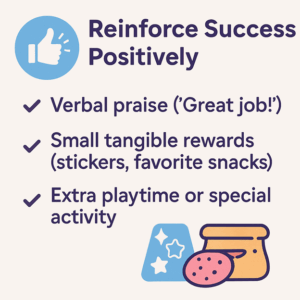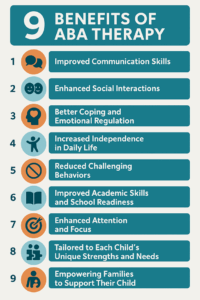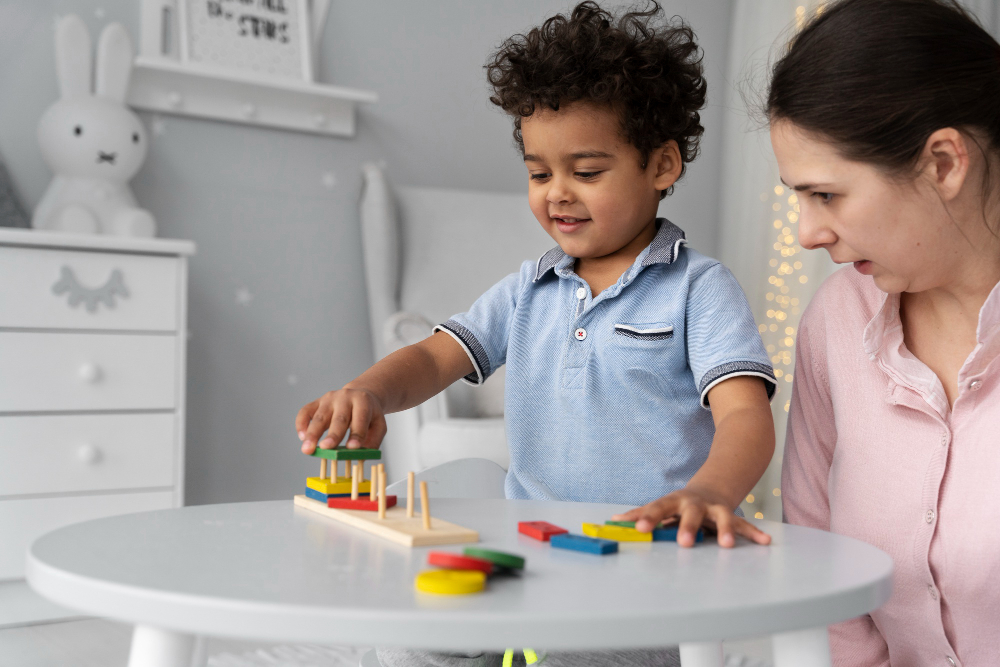Every parent wants their child to thrive. For families of children with autism, that journey often starts with finding the right support at the right time. Research suggests that autism intervention during the early years can create lasting benefits.
Applied Behavior Analysis (ABA) therapy is one of the most trusted options. Why? It combines structured learning with playful activities that children enjoy.
This article explores five key benefits of early ABA therapy. You’ll learn how it helps with communication, independence, social growth, and long-term success. We’ll also look at why early autism diagnosis matters and how access differs in states like North Carolina, Indiana, and Colorado. Ready to see how early autism treatment can open new doors? Let’s get started.
Early Autism Diagnosis: Signs to Look For
Spotting autism early changes everything. But what should families notice first? Pediatricians often guide parents to watch for milestones in play, social behavior, and language.
Common early signs include:
- Limited eye contact or little response to their name
- Delays in speech or unusual speech patterns
- Repetitive behaviors such as rocking or hand-flapping
- A strong need for routines or difficulty with changes
A 2019 study in Pediatrics found that children diagnosed before age three often see better outcomes with early autism treatment. Young brains are flexible. Experts call this neuroplasticity. Think of it like wet cement. The earlier you shape it, the easier it is to mold.
By noticing these signs early, families can explore autism therapy techniques that help children connect, learn, and grow. Wouldn’t you want your child to get that head start?
Early Autism Treatment: Why Does It Matter?

Why does timing matter so much? Starting ABA treatment soon after an early autism diagnosis means children build skills during critical developmental years.
A landmark study from UCLA researcher Dr. O. Ivar Lovaas showed that nearly 47% of children who began intensive ABA before age four made significant improvements in IQ and daily functioning. That’s almost half of the children gaining long-term benefits.
Here’s why starting early counts:
- Social Skills: Early sessions teach turn-taking and sharing. These habits stick.
- Language: Vocabulary grows faster. Children also feel less frustrated.
- Behavioral Flexibility: Kids learn coping tools that make transitions smoother.
When ABA therapy for kids begins before kindergarten, the impact can be transformative. Early support strengthens skills, boosts confidence, and sets the stage for future growth. Isn’t that every parent’s goal?
Early Intervention Benefits
The benefits of early intervention extend far beyond therapy sessions. Families often notice progress in routines, social comfort, and emotional balance.
Key early intervention benefits include:
- Better communication: Children learn to ask for what they need, which reduces meltdowns.
- Improved independence: Skills like brushing teeth or dressing bring confidence.
- School readiness: Kids adapt faster to structured learning.
The CDC notes that children who receive early intervention services are more likely to graduate high school and find employment later. Early choices create long-term success.
Picture this: a child once unable to express needs now asking questions in class. Or a child who hesitated to join peers is now sharing toys on the playground. These small wins add up to life-changing progress. Isn’t that worth starting early?
5 Key Benefits of Early ABA Therapy for Long-Term Autism Success

1. Stronger Communication Skills
ABA therapy breaks language learning into small, achievable steps. This makes communication feel less overwhelming. For some children, it may start with pointing. For others, it may grow into full conversations.
A 2020 study reported that 70% of children improved expressive language through structured ABA. Gains like these can continue into adulthood. Stronger communication skills help with friendships, school, and eventually work. The earlier therapy begins—especially before age four—the stronger the results.
2. Greater Independence in Daily Life
From tying shoes to managing bedtime, ABA therapy builds everyday skills. Therapists celebrate small wins, like brushing teeth, with positive reinforcement. Over time, these habits stick.
Long-term studies show that independence gained through ABA often continues into adulthood. Many individuals who started early report higher confidence and greater life satisfaction. Those who received 36 or more hours per week often showed the most growth.
By teaching independence early, ABA gives children tools to handle daily life with less help. Isn’t that the kind of confidence every child deserves?
3. Enhanced Social Interaction
Friendships can feel challenging for children with autism. Early ABA therapy changes that path. Role-playing games, group sessions, and social cue training prepare children for real-life connections.
Studies show that children who begin ABA before age four often see stronger gains in adaptive behavior. This sets the stage for teamwork, friendships, and smoother social interactions later.
Early intervention doesn’t just help with playdates. It also supports long-term social confidence, which can shape relationships in school and beyond.
4. Reduced Developmental Delays
Children who start ABA therapy early often close developmental gaps faster than those who begin later. Intensive therapy before age four has been linked to gains of 15–20 IQ points, stronger academic skills, and reduced autism symptoms.
Consistency matters too. Regular therapy hours make long-term progress more likely. These gains often last, helping children keep up with peers in school and social settings.
For families, this means ABA therapy doesn’t just reduce delays in the short term. It builds a foundation for lasting growth.
5. Long-Term Academic and Life Success
Perhaps the strongest benefit of early ABA is how durable it is. Skills don’t fade away once therapy stops. Instead, children keep building on what they’ve learned.
Research suggests that early ABA, especially before age five, connects to higher graduation rates and more employment opportunities later in life. Many adults who received ABA as children report stronger coping skills and more independence.
Investing in ABA early lays the groundwork for academic success, workplace readiness, and lifelong resilience.
ABA Therapy in Indiana, ABA Therapy in North Carolina, and Colorado: Why Location Matters
Timing isn’t the only factor. Where you live shapes access to autism intervention services.
- North Carolina: Expanded ABA services in both cities and rural areas. Families can often combine clinic-based ABA therapy with sessions at home. Searching “ABA therapist near me” usually provides several options.
- Colorado: Strong state support and collaboration with schools. Children often experience smoother transitions between classrooms and therapy sessions.
- Indiana: Families find a mix of clinic programs and home services. Many search “ABA clinics near me” to discover providers offering flexible schedules.
Access matters. When children receive consistent support across home, school, and clinic settings, they’re more likely to thrive.
Quick Comparison Table: Early ABA Therapy Outcomes
| Benefit | Short-Term Impact | Long-Term Impact |
| Communication | Clearer requests, fewer meltdowns | Stronger relationships, improved academics |
| Independence | Mastery of self-care tasks | Confidence, reduced reliance on others |
| Social Skills | Peer play, turn-taking | Friendships, teamwork in school |
| Learning Readiness | Focus in structured sessions | Success in mainstream classrooms |
| Lifelong Success | Early milestones reached | Higher graduation and employment rates |
FAQ: Early ABA Therapy
1. How soon after an early autism diagnosis should ABA therapy begin?
Experts often recommend starting at ages two or three. At this age, the brain is most responsive to learning.
2. Can ABA therapy happen outside of clinics?
Yes. Families often use ABA therapy at home for flexibility. Many also blend it with clinic-based ABA therapy for a balanced program.
3. How long does it take to see progress with ABA therapy?
Progress looks different for each child. Some families notice changes within a few months. Improvements in communication or routines often come first.
4. What makes ABA therapy different from other autism therapies?
ABA relies on positive reinforcement and data-driven methods. Each plan is tailored to the child, with measurable goals.
5. Is ABA therapy helpful for older children too?
Yes. While early intervention benefits are strongest, older children and teens still gain from ABA therapy techniques. Many improve social skills and classroom focus.
Building a Brighter Tomorrow Through Early ABA Therapy

Early ABA therapy does more than teach skills—it creates opportunities. Families who act quickly after an early autism diagnosis often see lasting benefits. Communication improves. Independence grows. Social confidence increases.
At Majestic Care ABA, we’ve seen how small steps create big changes. Research, success stories, and family experiences all point to the same truth: the earlier the start, the stronger the results. Majestic Care ABA is here to guide you every step of the way.
Whether you’re exploring ABA therapy in Indiana, North Carolina, or Colorado, one thing stays the same. Early support builds brighter futures. If you’ve been asking when to begin, the answer is simple: now is the best time—reach out to us today.


